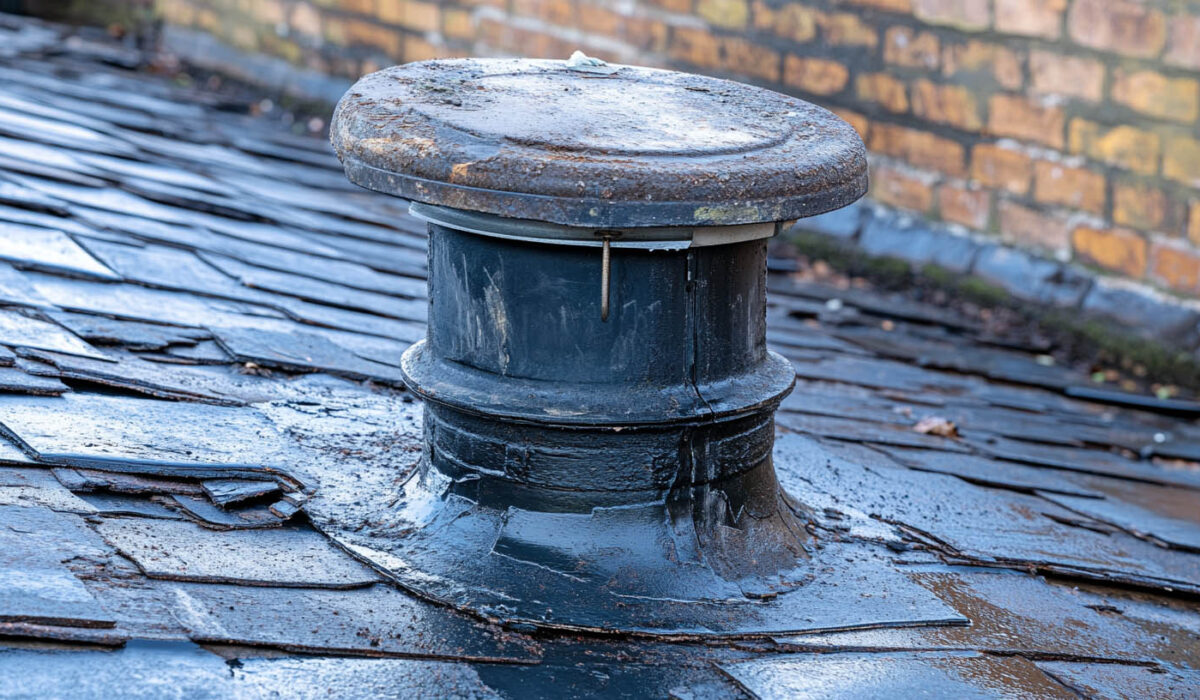Pipe boots are essential components of a roofing system, designed to create a watertight seal around vent pipes. When installed correctly, they protect against leaks and extend the lifespan of your roof. However, improper installation can lead to serious problems, including water intrusion, structural damage, and costly repairs. In this guide, we explore the role of pipe boots in roofing systems, the risks associated with incorrect installation, and solutions to ensure their proper function.
What Are Pipe Boots?
Pipe boots, also known as vent pipe flashing, are specialized coverings used to seal the area where vent pipes penetrate the roof. Typically made from materials like rubber, silicone, or metal, pipe boots are crucial for preventing water from entering your home through these vulnerable points. They are designed to accommodate expansion, contraction, and movement caused by temperature changes or structural shifts.
The Importance of Proper Installation
Correctly installed pipe boots serve as a barrier against water intrusion, ensuring the integrity of the roofing system. Key benefits include:
- Leak Prevention: A tight seal prevents water from seeping into the roof deck.
- Extended Roof Lifespan: Properly installed pipe boots protect against premature wear and tear.
- Energy Efficiency: By preventing leaks and drafts, pipe boots contribute to maintaining consistent indoor temperatures.
Consequences of Improper Installation
When pipe boots are not installed correctly, they can cause significant issues that compromise the entire roofing system.
Water Leaks and Moisture Intrusion
Improper installation creates gaps or weak seals, allowing water to seep into the roof deck. Over time, this can lead to:
- Rot and decay of wooden structures.
- Mold and mildew growth, which pose health risks.
- Staining and damage to interior ceilings and walls.
Structural Damage
Persistent water intrusion weakens the roof’s structural integrity, potentially leading to sagging or collapse. In extreme cases, damage may extend to the home’s foundation, increasing repair costs.
Accelerated Wear and Tear
Poorly installed pipe boots are more susceptible to weather damage. UV rays, high winds, and temperature fluctuations can cause them to crack or deteriorate, further exacerbating leaks and damage.
Common Mistakes in Pipe Boot Installation
Several errors can occur during pipe boot installation, including:
- Incorrect Sizing: Using a boot that does not fit the vent pipe snugly.
- Poor Placement: Misaligned pipe boots fail to cover the area adequately.
- Inadequate Sealing: Failure to use proper sealants or fasteners to secure the boot.
- Use of Substandard Materials: Low-quality boots are less durable and prone to failure.
Preventative Measures and Solutions
To ensure pipe boots function effectively and protect your roof, follow these steps:
Choose Quality Materials
Invest in high-quality pipe boots made from durable materials like silicone or neoprene. These materials resist weathering and provide long-lasting protection.
Ensure Proper Sizing and Fit
Measure vent pipes accurately to select the correct boot size. A snug fit minimizes gaps and ensures a watertight seal.
Hire Experienced Contractors
Work with skilled professionals who have experience in installing pipe boots. A qualified roofer will ensure the boots are aligned correctly, sealed properly, and secured with high-quality fasteners.
Regular Maintenance and Inspection
Schedule periodic roof inspections to identify and address issues with pipe boots. Look for signs of wear, such as cracks, tears, or loose fittings, and replace damaged boots promptly.
Omega Roofing, LLC: Excellence in Roofing Solutions
Omega Roofing, LLC, located in Jackson, TN, is a trusted name in exterior construction and roofing services. As an Atlas Pro Certified Contractor, the company excels in delivering superior craftsmanship and customer service. Their team ensures every pipe boot is installed with precision, protecting your home from leaks and extending the life of your roofing system.
Emerging Trends in Roofing Technology
Advances in roofing materials and installation techniques are enhancing the durability and effectiveness of pipe boots:
- UV-Resistant Materials: New pipe boots feature coatings that resist UV degradation, extending their lifespan.
- Smart Leak Detectors: Integrated sensors monitor moisture levels around pipe boots, alerting homeowners to potential issues.
- Pre-Fabricated Flashing Kits: These kits simplify installation, reducing the likelihood of errors.
Frequently Asked Questions
1. How often should pipe boots be inspected?
Inspect pipe boots at least twice a year and after major weather events to ensure they remain in good condition.
2. What are the signs of a failing pipe boot?
Look for water stains on ceilings, visible cracks or tears in the boot, and damp insulation around vent pipes.
3. Can I install pipe boots myself?
While it is possible, professional installation is recommended to ensure proper alignment, sealing, and durability.
4. Are certain pipe boot materials better for extreme climates?
Silicone and neoprene boots perform well in extreme temperatures and resist weathering, making them ideal for harsh climates.
5. What is the cost of replacing a damaged pipe boot?
The cost varies based on materials and labor, but timely replacement is essential to avoid more expensive roof repairs.
Conclusion
Proper installation and maintenance of pipe boots are vital for protecting your home from water damage and ensuring the longevity of your roofing system. By investing in quality materials, hiring experienced professionals, and conducting regular inspections, you can safeguard your home and avoid costly repairs.
Read also: Preparing Your Roof and Home for Spring and Summer Storms

